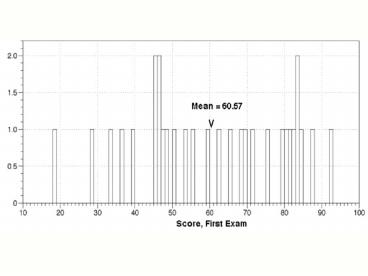Ground Rules, exams, etc. (no - PowerPoint PPT Presentation
Title:
Ground Rules, exams, etc. (no
Description:
Social Behavior Hermits must have lower fitness than social individuals Clumped, random, or dispersed (variance/mean ratio) mobility = motility = vagility (sedentary ... – PowerPoint PPT presentation
Number of Views:107
Avg rating:3.0/5.0
Title: Ground Rules, exams, etc. (no
1
2
Social Behavior Hermits must have lower
fitness than social individuals Clumped, random,
or dispersed (variance/mean ratio) mobility
motility vagility (sedentary sessile
organisms)
3
Social Behavior Use of Space Philopatry
Fluid versus Viscous Populations Coarse-graine
d versus fine-grained utilization Individual
Distance, Daily Movements Home
Range Territoriality (economic
defendability) Resource in short
supply Feeding Territories Nesting
Territories Mating Territories
4
(No Transcript)
5
Net Benefit
6
Sexual Reproduction Monoecious versus
Diecious Evolution of Sex gt Anisogamy Diploidy
as a fail-safe mechanism Costs of Sexual
Reproduction (halves heritability!) Facultative
Sexuality (Ursula LeGuin -- Left Hand of
Darkness) Protandry -- Protogyny (Social
control) Parthenogenesis (unisexual
species) Possible advantages of sexual
reproduction include two parents can raise
twice as many progeny mix genes with desirable
genes (enhances fitness) reduced sibling
competition heterozygosity biparental origin
of many unisexual species
7
Sexual Reproduction Monoecious versus
Diecious Evolution of Sex gt Anisogamy Diploidy
as a fail-safe mechanism Costs of Sexual
Reproduction (halves heritability!) Facultative
Sexuality (Ursula LeGuin -- Left Hand of
Darkness) Protandry -- Protogyny (Social
control) Parthenogenesis (unisexual
species) Possible advantages of sexual
reproduction include two parents can raise
twice as many progeny mix genes with desirable
genes (enhances fitness) reduced sibling
competition heterozygosity biparental origin
of many unisexual species
Protandrygt
Protogynygt
8
Why have males? The biological advantage of a
sex ratio that is unbalanced in favor of females
is readily apparent in a species with a
promiscuous mating system. Since one male could
fertilize several females under such a system,
survival of a number of males equal to the
number of females would be wasteful of food,
home sites, and other requirements for
existence. The contribution of some of the
surplus males to feeding the predators on the
population would be economically advantageous.
In other words, the eating of the less valuable
(to the population) males by predators would
tend to reduce the predator pressure on the more
valuable females. Blair (1960) The Rusty
Lizard
W. Frank Blair
9
Sex Ratio Proportion of Males Primary,
Secondary, Tertiary, Quaternary Equilibrium sex
ratio Fishers theory equal investment in the
two sexes
Ronald Fisher
10
Comparison of the Contribution to Future
Generations of Various Families in Case a in
Populations with Different Sex Ratios ____________
__________________________________________________
____ Case a Number of Males Number of
Females _________________________________________
_________________________ Initial
population 100 100 Family A 4
0 Family C 2 2 Subsequent
population (sum) 106 102 CA 4/106
0.03773 CC 2/106 2/102 0.03846 (family C
has a higher reproductive success) ______________
__________________________________________________
__ Note The contribution of family x is
designated Cx.
11
Comparison of the Contribution to Future
Generations of Various Families in Case a in
Populations with Different Sex Ratios ____________
__________________________________________________
____ Case a Number of Males Number of
Females _________________________________________
_________________________ Initial
population 100 100 Family E 0
4 Family C 2 2 Subsequent
population (sum) 102 106 CE 4/106
0.03773 CC 2/106 2/102 0.03846 (family C
has a higher reproductive success) ______________
__________________________________________________
__ Note The contribution of family x is
designated Cx.
12
Comparison of the Contribution to Future
Generations of Various Families in Case a in
Populations with Different Sex Ratios ____________
__________________________________________________
____ Case a Number of Males Number of
Females _________________________________________
_________________________ Initial
population 100 100 Family A 4
0 Family C 2 2 Family E
0 4 Subsequent population
(sum) 106 106 CA 4/106 0.03773 CC
2/106 2/106 0.03773 All three families have
equal success CE 4/106 0.03773 _____________
__________________________________________________
___ Note The contribution of family x is
designated Cx.
13
__________________________________________________
_________________________ Case b Number of
Males Number of Females _________________________
__________________________________________________
_ Initial population 100 100 Family A
2 0 Family B 1
2 Subsequent population (sum) 103 102 CA
2/103 0.01942 CB 1/103 2/102 0.02932
(family B is more successful) Initial
population 100 100 Family B 1
2 Family C 0 4 Subsequent
population (sum) 101 106 CB 1/101 2/106
0.02877 CC 4/106 0.03773 (family C is more
successful than family B) Natural selection will
favor families with an excess of females until
the population reaches its equilibrium sex ratio
(below). Initial population 100 200 Family
B 1 2 Family C 0
4 Subsequent population (sum) 101 206 C
B 1/101 2/206 0.001971 CC 4/206
0.01942 (family B now has the advantage) _________
__________________________________________________
__________________ Note The contribution of
family x is designated Cx.
14
(No Transcript)
15
Differential Mortality of the sexes during the
period of parental care.
16
Differential Mortality of the sexes during the
period of parental care.
17
Evolution of Sex Isogamy gt
Anisogamy Sexual reproduction halves
heritability, offsetting factors Diploidy as a
backup system Simultaneous vs. sequential
hermaphroditism Monecious vs Diecious,
Protandry, Protogyny Why have males? Fishers
theory of sex ratio, equal parental
investment Heterozygosity Biparental origin of
many unisexual species
18
Sexual Selection Mating Preferences Sex
that invests the most is the most choosy about
mates Competition for the best mates of the
opposite sex Jealousy, Desertion,
Cuckoldry Certainty of Maternity, Uncertainty of
Paternity Epigamic selection (intersexual,
between the sexes) Battle of the
sexes Natural selection produces a correlation
between male genetic quality and female
preference Sexy son phenomenon (females cannot
afford to mate with males that are not
attractive to other females)































